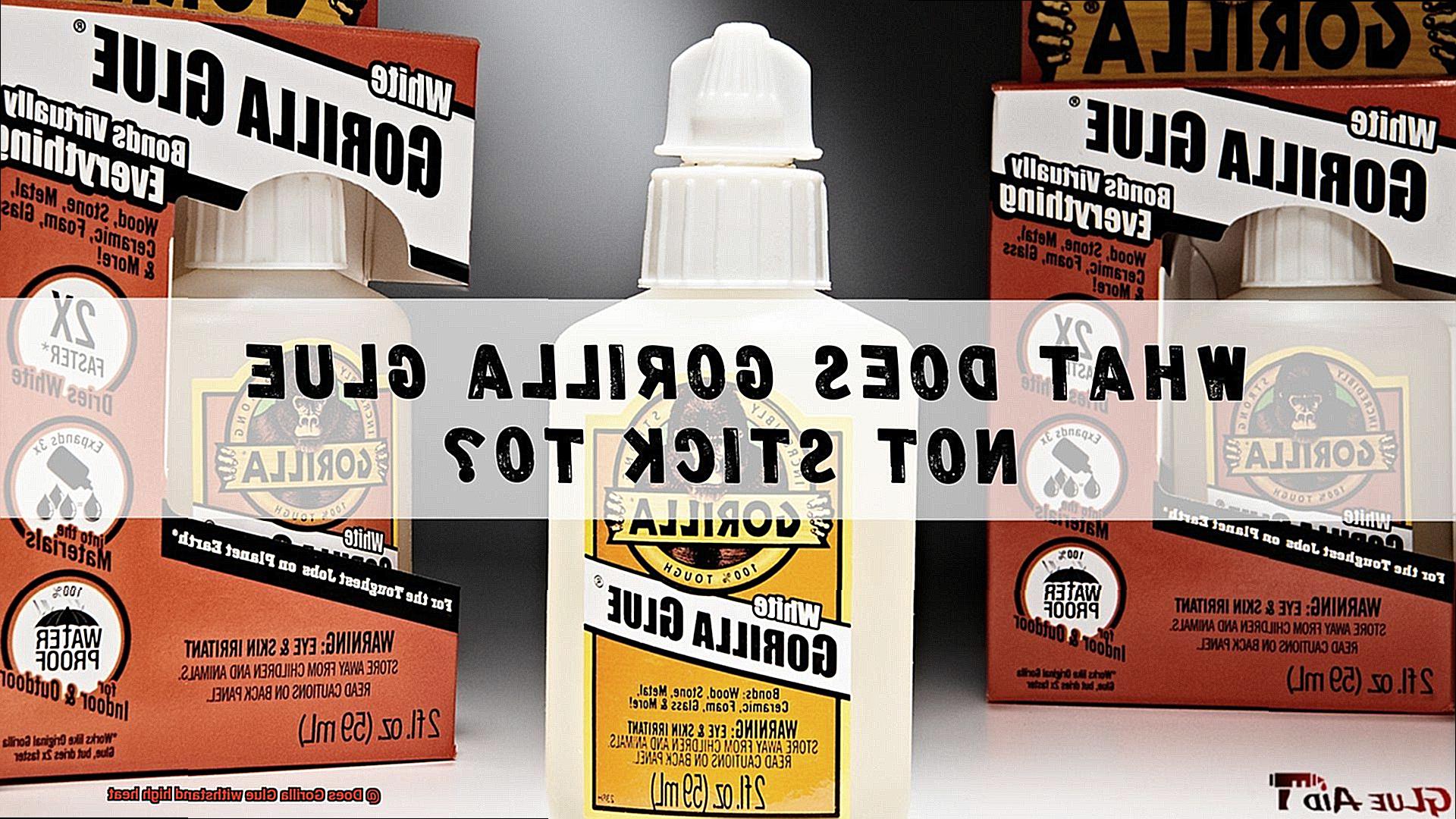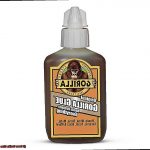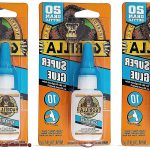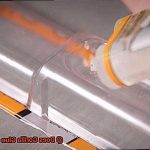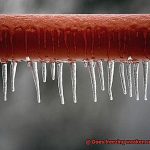When it comes to sticking things together, we all want an adhesive that can handle the heat. Whether you’re fixing a broken chair or crafting a masterpiece, you need something tough and unyielding. Enter Gorilla Glue – the superhero of adhesives. But does this mighty glue truly have what it takes to withstand scorching temperatures?
In this blog post, we’re diving deep into the fiery world of Gorilla Glue, exploring its composition, testing techniques, and standout features that make it the go-to choice for heat-sensitive applications. Whether you’re a DIY enthusiast or a seasoned pro, understanding how Gorilla Glue holds up under extreme heat can help you unleash your creative powers and achieve exceptional results in your projects. So get ready to witness the incredible heat-resistant capabilities of this adhesive powerhouse.
How Does Gorilla Glue React to Heat?
Contents
- 1 How Does Gorilla Glue React to Heat?
- 2 Types of Gorilla Glue and Their Heat Resistance
- 3 Can Gorilla Glue Withstand Normal Household Temperatures?
- 4 Can Gorilla Glue Withstand Intermittent Exposure to High Heat?
- 5 Can Gorilla Glue Withstand Continuous Exposure to Extreme Heat?
- 6 Alternatives for Applications Requiring Constant Heat Resistance
- 7 Factors to Consider When Using Gorilla Glue in High Heat Situations
- 8 Recommended Usage Guidelines for Maximum Effectiveness
- 9 Conclusion
When it comes to adhesive strength, Gorilla Glue is a heavyweight champion. But what happens when the temperature rises and the heat bears down? Brace yourself as we dive into the sizzling world of Gorilla Glue and its reaction to scorching temperatures. Get ready for an adhesive adventure like no other.
Gorilla Glue’s Heat Resistance:
Gorilla Glue prides itself on its toughness, and that extends to its ability to handle heat. With a temperature range spanning from -40°F to 200°F (-40°C to 93°C), this glue can tackle both icy chills and blistering heatwaves. Thanks to its secret ingredient – a polyurethane formula – Gorilla Glue undergoes a curing process when exposed to moisture, granting it unparalleled resilience.
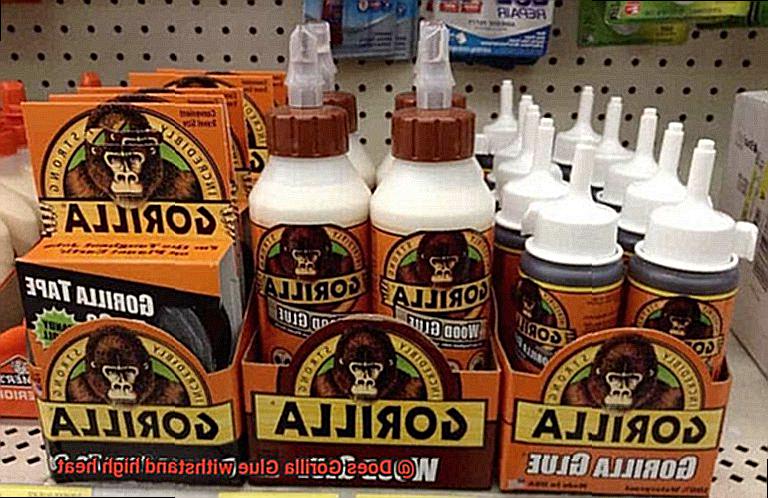
Precautions for High-Heat Applications:
While Gorilla Glue can hold its own against high temperatures within its recommended range, extreme heat can still throw a wrench in its adhesive powers. Here are some vital precautions to bear in mind:
- Flames are Foes: Direct contact with flames spells trouble for the bond formed by Gorilla Glue, potentially compromising its effectiveness. Steer clear of open flames or any scorching infernos that could put your glued object at risk.
- Time is of the Essence: To ensure a robust bond, grant Gorilla Glue ample time to cure before exposing it to fiery conditions. Patience is key here. By allowing enough time for the glue to set properly, you elevate its resistance to heat and protect its adhesive properties.
- Specialized Adhesive Arsenal: If your project demands constant exposure to extreme heat, consider enlisting the help of specialized high-temperature adhesives. These remarkable concoctions are tailor-made for such fiery trials and offer superior performance under elevated temperatures.
- Material Matchmaking: Different materials have their own unique thermal expansion rates, which means they react differently when faced with heat. To safeguard your project’s integrity, carefully select an adhesive that suits the specific materials you’re bonding together.
Types of Gorilla Glue and Their Heat Resistance
Gorilla Glue is renowned for its strength and versatility, but not all varieties offer the same level of heat resistance. In this article, we will explore the different types of Gorilla Glue in detail, focusing on their respective heat resistance capabilities. Whether you are working on a woodworking project or need a reliable bond for construction materials, understanding the heat resistance properties of Gorilla Glue will help you make an informed choice.
The Original Gorilla Glue:
The original Gorilla Glue is celebrated for its incredible strength and adaptability. It can bond various materials together, but it does have limitations when it comes to heat resistance. The original Gorilla Glue can handle temperatures up to 200°F (93°C), making it suitable for most household applications. However, if you require a glue capable of withstanding extreme heat, you may need to explore other options.
Gorilla Super Glue:
Ideal for quick repairs and small projects, Gorilla Super Glue forms an instant bond. However, its heat resistance capabilities are slightly lower compared to the original Gorilla Glue. It can withstand temperatures up to 180°F (82°C), making it suitable for most indoor applications.
Gorilla Epoxy:
For greater heat resistance, Gorilla Epoxy is an excellent choice. It can handle temperatures up to 300°F (149°C), making it suitable for applications involving higher temperatures. Its two-part formula ensures a strong and durable bond on various surfaces.
Gorilla Construction Adhesive:
When it comes to heavy-duty bonding on construction materials, Gorilla Construction Adhesive excels. Not only does it offer exceptional water resistance, but it can also handle temperatures up to 200°F (93°C). Whether you are working indoors or outdoors, this adhesive will provide a reliable bond.
Gorilla Wood Glue:
Gorilla Wood Glue is specially designed for woodworking projects. While it offers a strong bond, its heat resistance is limited. It can withstand temperatures up to 130°F (54°C), making it suitable for most woodworking applications but not extreme heat conditions.
Can Gorilla Glue Withstand Normal Household Temperatures?
Gorilla Glue is a highly resilient and durable adhesive that is widely used for various household projects. If you’re wondering whether Gorilla Glue can withstand the normal temperatures in your home, the answer is a resounding yes.
Gorilla Glue is designed to be versatile and strong, making it suitable for a wide range of applications. When it comes to normal household temperatures, Gorilla Glue performs exceptionally well. Once fully cured, it can withstand temperatures ranging from -40°F to 200°F (-40°C to 93°C). This means that under typical temperature conditions found in most homes, Gorilla Glue will not fail or lose its adhesive properties.
Whether you’re repairing furniture in your living room or bonding materials together in your kitchen, you can trust that Gorilla Glue will maintain its bond and adhesive strength. Normal household temperatures typically fall within the range of 68°F to 78°F (20°C to 25°C), which is well within the capabilities of Gorilla Glue.
However, it’s important to note that extreme temperature fluctuations or prolonged exposure to very high temperatures can affect the performance of any glue, including Gorilla Glue. If the temperature exceeds 200°F (93°C), the glue may start to degrade and lose its effectiveness. Rapid changes in temperature can also cause materials to expand and contract, potentially compromising the bond created by the glue.
To ensure the best results and longevity of your adhesive bond, it’s advisable to avoid exposing Gorilla Glue or any other adhesive to extreme temperatures whenever possible. If you’re working on a project that will be regularly exposed to high heat, such as near a fireplace or outdoor grill, you may want to consider specialized high-temperature adhesives specifically designed for those conditions.
Can Gorilla Glue Withstand Intermittent Exposure to High Heat?
Gorilla Glue has become a go-to adhesive for many household projects, but can it handle the heat? In this article, we will explore the heat resistance of Gorilla Glue and its limitations when it comes to high temperatures.
The Original Gorilla Glue:
The original Gorilla Glue, also known as Gorilla Glue Multi-Purpose, is a powerful adhesive that can withstand temperatures up to 200°F (93°C). However, it is not recommended for direct exposure to high heat. While it can handle everyday heat found in most homes, extreme temperature conditions should be avoided.
Specialized Products for High Heat:
Gorilla Glue offers specialized products designed to handle higher temperatures. Gorilla Epoxy can handle intermittent exposure to temperatures up to 180°F (82°C), while Gorilla Super Glue can handle up to 200°F (93°C). These options provide a stronger bond in hotter environments compared to the original multi-purpose glue.
Continuous Exposure to High Heat:
Continuous or prolonged exposure to high heat may compromise the effectiveness of any adhesive, including Gorilla Glue’s specialized products. For projects with anticipated continuous exposure to high heat, it is best to consider specialized adhesives formulated for extreme heat resistance. These adhesives can withstand temperatures exceeding 500°F (260°C).
Proper Application and Surface Preparation:
To maximize the heat resistance of any adhesive in high-temperature environments, follow the manufacturer’s instructions carefully. Clean and prepare the bonding surfaces thoroughly, as contaminants can weaken the bond and reduce heat resistance.
Can Gorilla Glue Withstand Continuous Exposure to Extreme Heat?
Gorilla Glue is a well-known adhesive that has gained popularity for its strength and versatility. However, when it comes to extreme heat, can Gorilla Glue hold up? In this article, we will explore the composition of Gorilla Glue, understand its limitations in high-temperature situations, and discuss alternative options for extreme heat applications.
Understanding Gorilla Glue’s Composition:
Gorilla Glue is a polyurethane-based adhesive that cures through moisture activation. It expands when exposed to moisture, creating a strong bond between materials. While this makes it an effective adhesive for many projects, it also reveals its vulnerability to extreme heat.
The Importance of Specialization:
Recognizing the need for specialized adhesives in high-temperature applications, the manufacturer of Gorilla Glue, Gorilla Glue Company, has developed Gorilla Hot Glue. This high-temperature adhesive is specifically designed to withstand continuous exposure to heat without compromising its strength.
Degradation Under Extreme Heat:
Continuous exposure to extreme heat can cause regular Gorilla Glue to degrade over time. The glue may become brittle and lose its adhesive properties, making it less effective in bonding materials together. The specific temperature at which this degradation occurs varies depending on factors such as duration of exposure and application specifics. However, as a general guideline, it is not recommended to use Gorilla Glue in situations where it will be subjected to continuous high heat.

Seeking Alternatives:
For projects that require an adhesive capable of withstanding continuous exposure to extreme heat, it is advisable to explore other specialized options. There are adhesives available on the market that are specifically formulated for high-temperature applications. These adhesives are designed to handle extreme temperatures without compromising their adhesive properties.
Alternatives for Applications Requiring Constant Heat Resistance
Applications that require constant heat resistance demand the right adhesive to ensure durability and reliability. While Gorilla Glue is a popular choice, it may not hold up under extreme temperatures. Fortunately, there are alternative options available that can meet these requirements.
First on the list is high-temperature epoxy. This adhesive is specially formulated to withstand and maintain its structural integrity even at high temperatures. It’s the go-to choice in industries like automotive, aerospace, and electronics where heat resistance is crucial.
Next up is ceramic adhesive, a magical glue designed for materials exposed to high temperatures. With the ability to handle scorching temperatures up to 2000°F (1093°C), it’s perfect for furnace repairs, kiln lining, and bonding ceramic components.
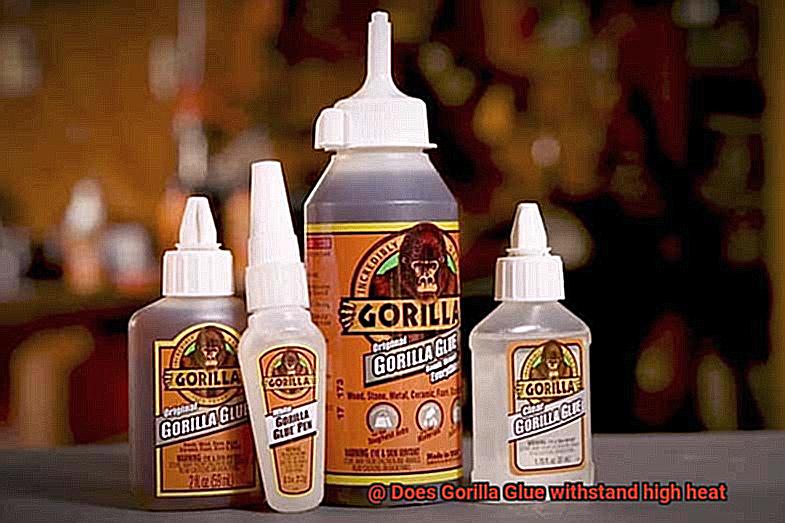
For versatility, silicone adhesives are a fantastic option. They offer excellent thermal stability and can handle temperatures up to 600°F (315°C). From automotive applications to electronics and appliances, silicone adhesives are masters of heat dissipation.
But if extreme heat resistance is required, specialty adhesives like phenolic or polyimide adhesives are heroes. These bad boys can handle temperatures exceeding 1000°F (538°C) and offer exceptional thermal stability.
However, if glue isn’t cutting it for your heat-resistant needs, mechanical fastening methods are reliable alternatives. Bolts, screws, or rivets can provide a solution in extreme temperature conditions without relying on adhesive properties.
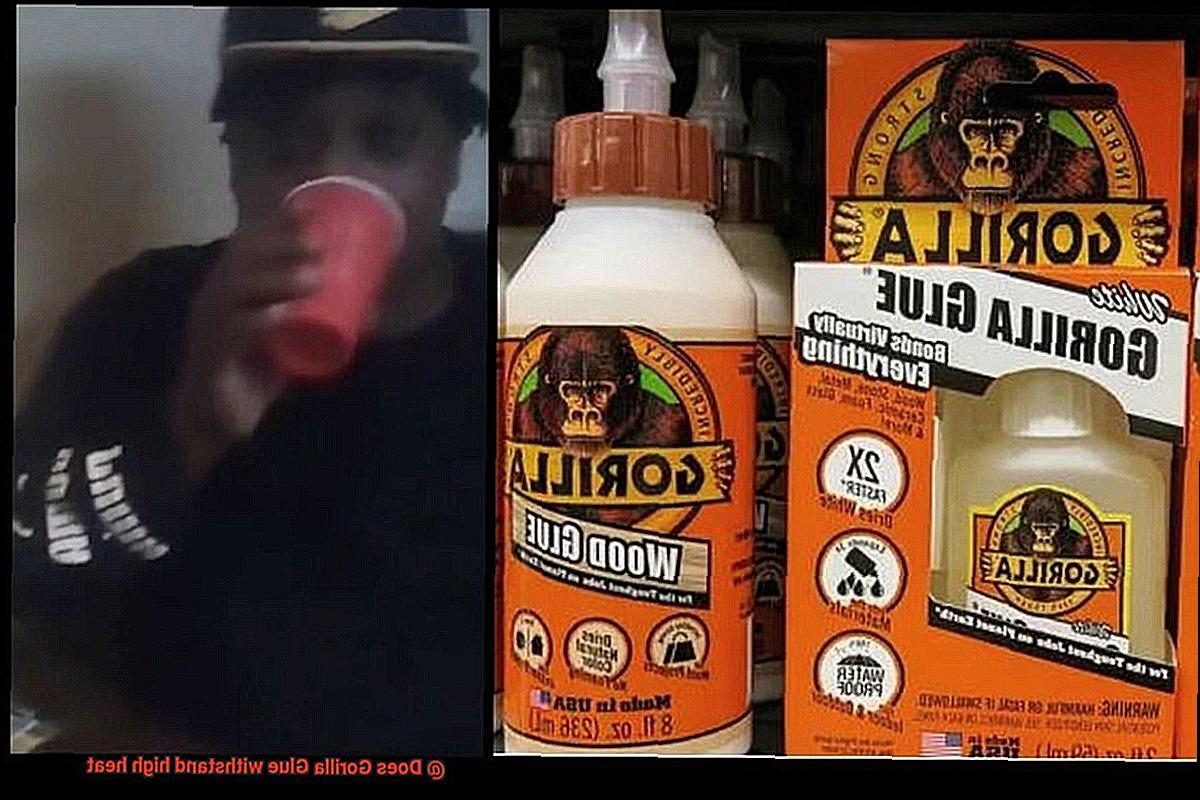
Factors to Consider When Using Gorilla Glue in High Heat Situations
When it comes to bonding materials in high heat conditions, the choice of adhesive is crucial. Gorilla Glue, known for its strong bond, is a popular option, but there are several factors to consider before using it in such situations. This article explores the key factors that can affect the performance of Gorilla Glue in high heat and offers alternative options for extreme temperatures.
Temperature Resistance:
The first and most crucial factor is Gorilla Glue’s temperature resistance. While it is strong, it may not hold up well under extremely high temperatures. Check the product’s temperature resistance specifications before using it in high heat applications to determine if it’s suitable for your needs.
Application Surface:
Different materials have varying heat resistance levels, which can affect any adhesive’s performance, including Gorilla Glue. Consider the surface on which you plan to apply the glue. Metal or glass surfaces are generally more heat-tolerant, while plastics or wood may be more susceptible to damage. Ensure the adhesive you choose is compatible with the material you’re working with.
Preparing the Surface:
Properly preparing the surface is crucial for a strong bond and better heat resistance. Thoroughly clean the surface to remove dirt, dust, or grease that could interfere with the adhesive’s effectiveness. Additionally, roughening or sanding the surface can improve the glue’s grip and enhance its ability to withstand higher temperatures.
Bond Strength:
The strength of the bond created by Gorilla Glue plays a significant role in its ability to withstand high heat situations. A stronger bond means the glue is more likely to hold up under extreme conditions, including heat exposure. Consider using Gorilla Glue’s specialized formulas, such as their high strength or heavy-duty options, for applications where heat resistance is essential.
Duration of Heat Exposure:
While Gorilla Glue may have some level of temperature resistance, prolonged exposure to high temperatures can compromise its effectiveness. If your application involves continuous heat exposure, explore alternative adhesive options specifically designed for such conditions. High-temperature epoxy, ceramic adhesive, and silicone adhesives are some alternatives to consider.
Safety Precautions:
Regardless of the adhesive you choose, follow safety precautions when working in high heat situations. This includes working in a well-ventilated area, wearing appropriate protective gear like gloves and goggles, and following the manufacturer’s instructions for proper application and curing. Taking these precautions ensures the glue’s effectiveness and your well-being during the process.
Recommended Usage Guidelines for Maximum Effectiveness
Before diving in, understanding the recommended usage guidelines is crucial for maximum effectiveness. In this post, we will cover surface preparation, application techniques, clamping, and considerations for high heat environments, empowering you with the knowledge needed for successful bonding.
Surface Preparation:
To ensure a strong and durable bond, preparing the surfaces is key. Thoroughly clean them, removing any dust, dirt, or grease. For smooth surfaces, roughen them up using sandpaper or a file to enhance adhesion and boost bond strength.
Apply Sparingly:
Gorilla Glue expands as it cures, so using too much can lead to messy overflow. To avoid this, apply a thin layer of glue. Remember, a little goes a long way in most cases. However, for larger or demanding projects, you may need to apply more glue to achieve optimal results.
Clamp for Strength:
Join the surfaces together and clamp them firmly after applying the glue. Applying pressure during the drying process helps create a strong bond. Keep in mind that Gorilla Glue requires moisture to activate its curing process. When working with non-porous materials like metal or plastic, lightly misting the surfaces with water before applying the glue can enhance bonding strength.
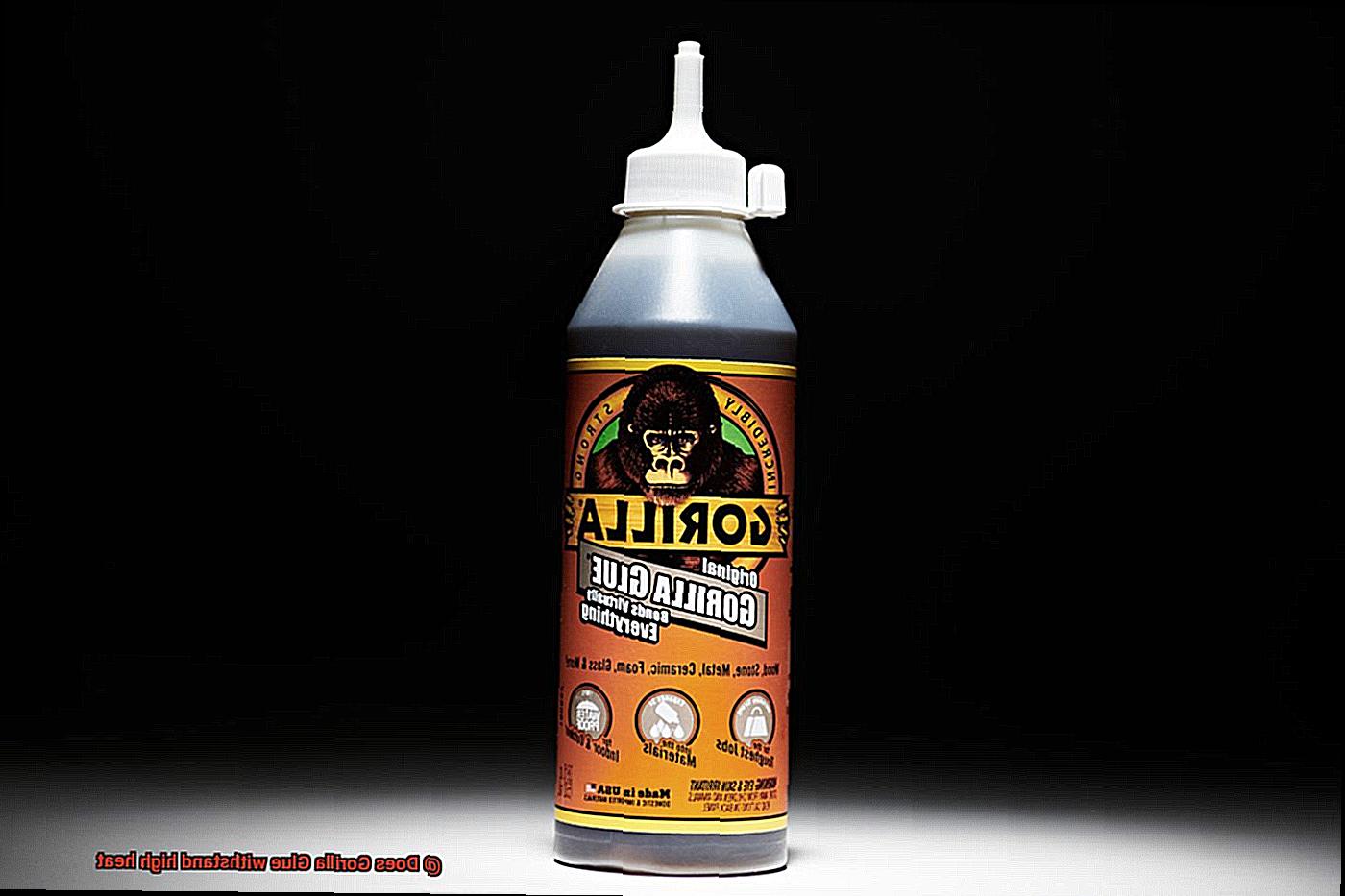
High Heat Considerations:
While Gorilla Glue is renowned for its strength and resilience, it has limitations when exposed to extreme temperatures. Avoid continuous exposure to temperatures above 180°F (82°C) as it can weaken the bond over time. If your project involves high heat conditions regularly, consider alternative adhesive options designed for heat resistance, such as epoxy or silicone-based glues.
Conclusion:
By following these recommended usage guidelines, you can unleash the full potential of Gorilla Glue for maximum effectiveness. Proper surface preparation, applying the glue sparingly, and ensuring adequate pressure during the drying process are key steps to achieve a strong bond. However, if your project requires continuous exposure to extreme temperatures, exploring alternative adhesive options with superior heat resistance is advisable.
bG60VfP5Z84″ >
Conclusion
In conclusion, Gorilla Glue is a formidable adhesive that can withstand high heat to a certain extent. Whether you’re using the original Gorilla Glue, Gorilla Super Glue, or Gorilla Construction Adhesive, these powerful adhesives can handle temperatures up to 200°F (93°C), making them perfect for most household tasks. However, it’s important to bear in mind that direct contact with flames or continuous exposure to scorching temperatures can compromise the effectiveness of Gorilla Glue.
If your project demands even greater heat resistance, fear not. There are specialized options available. Enter Gorilla Epoxy and silicone-based adhesives. With a temperature tolerance of up to 300°F (149°C), Gorilla Epoxy is the go-to choice for those seeking stronger bonds and enhanced performance in hotter environments. But wait, there’s more. Silicone adhesives take it up another notch, boasting an impressive ability to withstand temperatures up to a sizzling 600°F (315°C).
But before you embark on your high-heat bonding adventure, remember that success lies in the details. Surface preparation, application techniques, and material compatibility all play crucial roles when using Gorilla Glue in scorching situations. By adhering to recommended usage guidelines, you’ll maximize its effectiveness and ensure a bond that could withstand the heat of a thousand suns. However, if your project involves continuous exposure to extreme heat, it’s wise to explore alternative adhesive options specifically designed for high-temperature environments.
Safety should always be at the forefront of your mind during any adhesive endeavor. Ensure you work in well-ventilated areas and diligently follow manufacturer instructions. By fully understanding the capabilities and limitations of Gorilla Glue under intense heat conditions, you’ll be empowered to make informed decisions and select the perfect adhesive for your project’s needs.
So there you have it – whether it’s tackling everyday household tasks or venturing into the fiery depths of high-temperature projects, Gorilla Glue has got your back.

